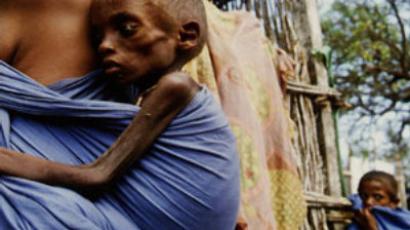In condoms we trust: can contraceptives cool the planet?

As global leaders begin the herculean task of cooling a warming planet, one UN group has suggested free contraceptives and family planning seminars to reduce the planet’s numbers.
Would fewer numbers of people shopping, sitting in gridlock and burning coal for electricity help reduce the impact of global warming? The UN Population Fund (UNFPA) said Wednesday the answer is yes, arguing that the fight against global warming could be supported by making free condoms and family planning seminars more readily available to the public.
The UNFPA did not provide any “magic number” of births each family should aspire to achieve, but said “As the growth of population, economies and consumption outpaces the Earth’s ability to adjust, climate change could become much more extreme and conceivably catastrophic.”
The planet’s population is expected to surge to 9.2 billion from the current 6.7 billion by 2050, and many fear that such unprecedented growth will push Earth’s temperatures, and thus the weight-bearing ecosystem, beyond the “breaking point.”
The heaviest population growth is expected to occur in the developing world, where women do not have easy access to reproductive health services and are giving birth like jackrabbits.
India, for example, a major condom giveaway notwithstanding, is preparing for a 50 percent explosion in its numbers by 2050, topping off at 1.6 billion, thus surpassing its bursting-at-the-seams neighbor China as the most populated place.
“Women with access to reproductive health services,” the UN agency said Wednesday at a conference in London, “have lower fertility rates that contribute to slower growth in greenhouse gas emissions.”
“We have now reached a point where humanity is approaching the brink of disaster,” Thoraya Ahmed Obaid, UNFPA executive director, told reporters Wednesday.
Onward to Copenhagen
Ahead of the much-anticipated Copenhagen Summit, scheduled for December 7 – December 18, the UNFPA released its 2009 report on Thursday, which called for the inclusion of human considerations into the debate on climate change. The report makes the case that women, particularly those in underdeveloped countries, were most vulnerable to climate change.
“They are among the most vulnerable to climate change,” according to the report, “partly because in many countries they make up the larger share of the agricultural work force and partly because they tend to have access to fewer income-earning opportunities.”
“Women manage households and care for family members, which often limits their mobility and increases their vulnerability to sudden weather-related natural disasters,” the report continued. “Drought and erratic rainfall force women to work harder to secure food, water and energy for their homes.”
The report then alluded to a “cycle of deprivation” that follows in the footsteps of poverty and a lack of educational opportunities.
“Girls drop out of school to help their mothers with these tasks. This cycle of deprivation, poverty and inequality undermines the social capital needed to deal effectively with climate change.”
Indian Environment Minister Jairam Ramesh, who released the report, stressed the importance of women’s development in tackling climate change.
“No doubt, India is a country extremely vulnerable to climate change,” the minister told reporters.
Ramesh, however, refused to make a direct connection between population growth and climate change.
“Between 1985 and 2005, China had a negative population growth, but during that period their emissions went up by 40 percent,” he said.
One UN official stressed the possible consequences of climate change on India’s rural population, which depends on farming and seasonal fluctuations for its survival.
“As per the 2001 census, approximately 92 million households or 490 million people are dependent on marginal or small farm hoardings,” said Nesim Tumkaya, UNFPA representative.
“This translates into 60 percent of the rural population. Any change in India’s summer monsoon because of climate change will immediately threaten the livelihoods of these people.”
The Global Humanitarian Forum, based in Geneva, has estimated that more than 300,000 people are killed each year by climate change, nearly all of them in poor countries.
Hot-air alarmists?
Although the idea of a finite planet, as opposed to an infinite planet, being forced to play host to 9.2 billion partying people is a recipe for imminent disaster, there is a bit of a silver lining in the approaching storm cloud.
Despite our teeming billions, many of who have never heard of such a thing as contraception, global census researchers are trying to calm the hysteria, arguing that fertility rates are actually falling.
The trend is obvious in Europe, where many nations are struggling with a demographic crisis.
Suffice to quote this paragraph from a research paper released in September 2008 by the Center for Economic Policy Research.
“After decades of falling fertility rates,” the report warned, “Europe faces an imminent demographic crisis. In 2006, fertility rates were below 1.4 children per woman in Germany, Italy, Spain and all of Eastern Europe.”
The researchers then expressed alarm that no European country showed a fertility of 2.1 or higher, which represents the “replacement level” needed to maintain a constant population size.
“Unless Europe’s lack of babies is made up for by a huge increase in immigration, at current trends most European countries will soon experience declining populations. Can anything be done to reverse the European baby bust?”
In other words, the UN’s plans for cooling down the planet through condoms and family planning seminars will not be welcomed in many parts of the world, especially where numbers are on the decline.
One nation that would be highly skeptical about introducing programs to reduce population numbers is Russia, which is already experiencing a demographic crisis.
According to the UN, Russia's population has shrunk by 6.6 million people since 1993, and could lose 11 million more by 2025
In Russia, as well as in much of Europe, where the population is getting older and a backlash is now underway against loose immigration legislation, politicians are looking for ways to increase birthrates. The efforts seem to be paying dividends. In Russia, the birth rate is reportedly up between 7 and 8 percent. In August alone, 1000 more people were born than died.
But at least one Russian demographer argued that the modest population increase experienced by Russia this year is not a long-term trend.
"What we are seeing today is a temporary fluctuation," said Igor Beloborodov, director of the Institute of Demographic Studies, as quoted by Axcess News. "We can't define this as an improvement. The general situation in Russia and in Europe is really a demographic chasm."
So while some highly populated countries, like China and India, see the population explosion as a potential threat to their security and long-term stability, other nations are implementing government programs to stimulate population growth.
The Russian government has made raising the birthrate a national priority, with Prime Minister Vladimir Putin and President Dmitry Medvedev drawing frequent attention to the demographic crisis.
Measures since 2006 include larger maternity packages with paid maternity leave for up to 18 months, and full salary compensation for four months. The so-called "maternity capital" gives women who have a second child $10,000 for housing or education.
As for the United States, the only thing saving its native population from going down the drain, so to speak, is the continuation of a loose immigration policy that is also, as is the case in Europe and elsewhere, sparking a political backlash.
So it seems the brunt of the global population problem will fall on the shoulders of India, China and other developing nations.
Whether or not delegates in Copenhagen can achieve a breakthrough on the issue remains to be seen.













